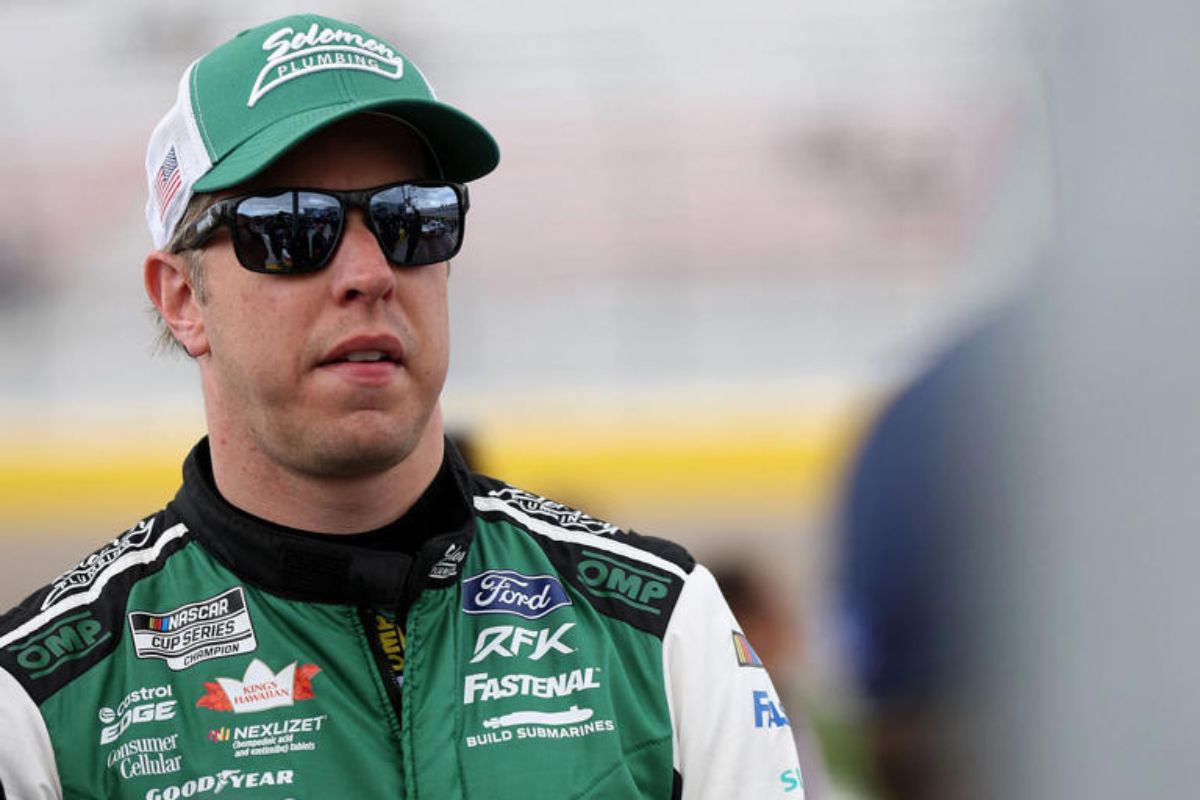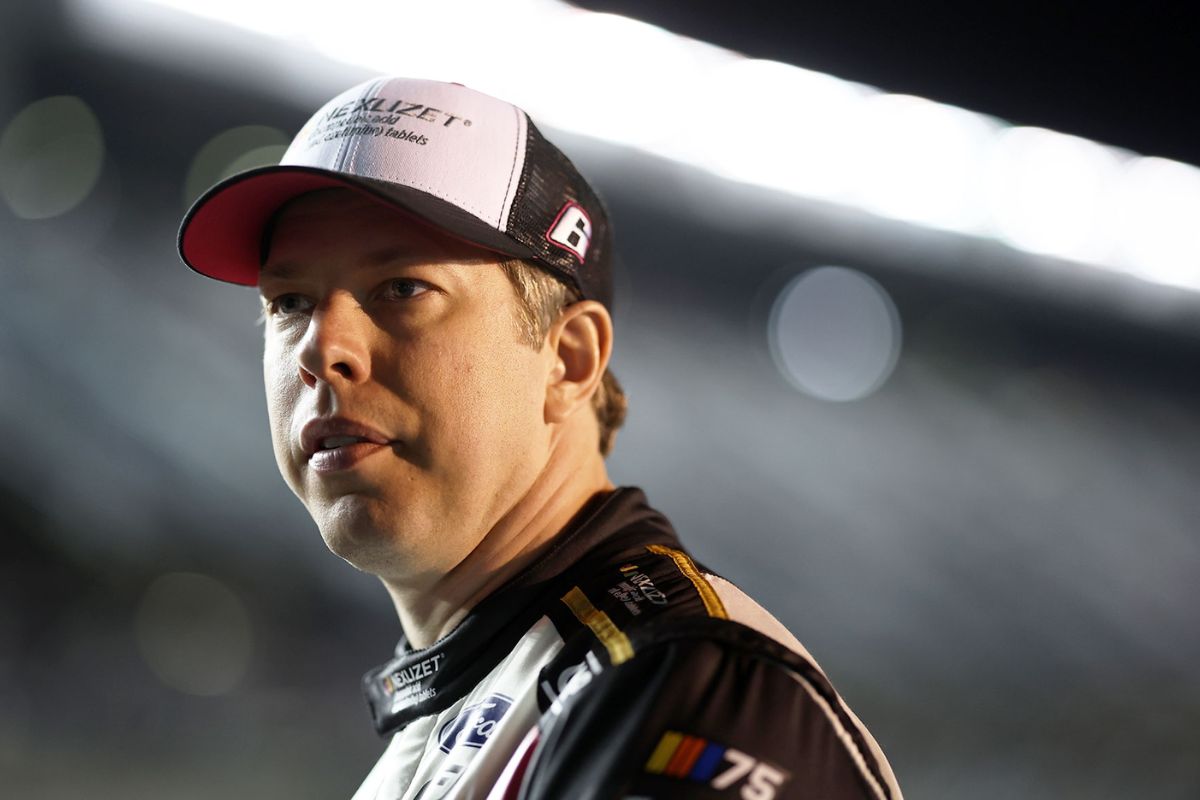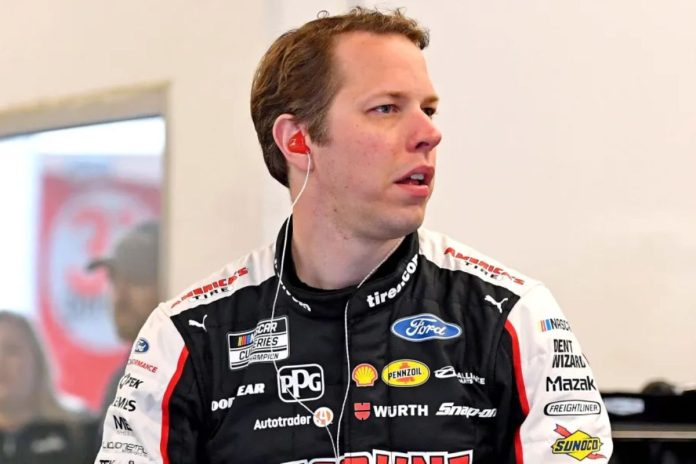Brad Keselowski Speaks Out: Brad Keselowski’s commentary brings a critical focus on NASCAR’s purported partiality in the aftermath of Denny Hamlin’s controversial win at the Toyota Owners 400. The issue pivots around Hamlin’s restart tactics, initially lauded and then questioned for legitimacy, shedding light on NASCAR’s officiating. This scenario, tagged as ‘Jumpgate’, has erupted into a broader discourse on the fairness and transparency of NASCAR’s decision-making. With NASCAR’s integrity in the spotlight, Keselowski’s reflections emphasize the perpetual quest for competitive balance amidst innovation. Understanding the full scope of these challenges provides insight into NASCAR’s dynamic ecosystem and its efforts toward equity and transparency.
Key Takeaways
- Brad Keselowski emphasizes the importance of impartiality in NASCAR’s decision-making and officiating processes.
- The controversy over Denny Hamlin’s restart at Richmond highlights potential concerns about NASCAR showing bias in race outcomes.
- Keselowski’s reflections suggest that clear, consistent rules and their fair application are crucial for maintaining competitive integrity in NASCAR.
- The episode at Richmond, labeled ‘Jumpgate’, has spurred discussions on the need for transparency in NASCAR’s officiating standards.
- Keselowski advocates for careful innovation in NASCAR to ensure that new changes do not unfairly disadvantage certain teams or drivers.
Controversy Surrounding Denny Hamlin’s Victory at Toyota Owners 400
Denny Hamlin’s 53rd career Cup Series win at the Toyota Owners 400 in Virginia was shrouded in controversy, casting a shadow over what should have been a clear-cut victory. The crux of the contention stemmed from Hamlin’s restart during the race. Initially, NASCAR’s VP of Competitions, Elton Sawyer, praised Hamlin’s restart technique. However, this acclaim was soon overshadowed by an acknowledgment of an early roll on Hamlin’s part, a pivotal detail that put the legitimacy of his victory under the microscope.
This incident transcends a mere racing dispute, touching upon the broader issue of the fine line between strategic brilliance and rule infringement. In motorsports, where milliseconds can determine the outcome, the scrutiny of every action is paramount. The early roll, a seemingly minor deviation, has far-reaching implications. It challenges the integrity of competitive fairness and brings to light the rigorous standards by which every action is judged.
Moreover, the incident highlights the inherent complexities in officiating high-stakes races. Brad Keselowski’s defense of NASCAR’s officiating, attributing the controversy to human error, emphasizes a critical aspect of sports governance. It suggests that the blend of human judgment and the relentless pursuit of perfection in sports can sometimes lead to contentious outcomes.
This controversy, thus, is not simply about a disputed victory. It encapsulates the broader challenges of maintaining the delicate balance between competitive edge and adherence to the rules, the pressure on officials to make split-second decisions, and the inevitable human factor that can sway the scales in the high-octane world of Cup Series racing.
“Well, I think first and foremost I really respected Elton Sawyer’s answer when he said they just missed it. I think that’s okay. I think that happens in sports.” ( Keselowski )

Impact on the Richmond Race and NASCAR’s Officiating
The controversy at Richmond Raceway, prominently highlighted by Hamlin’s ‘Jumpgate’, has cast a long shadow over NASCAR’s officiating standards, sparking widespread scrutiny and debate within the motorsport community. This incident not only brought to light the complexities and inconsistencies inherent in race officiating but also raised questions about the fairness and transparency of NASCAR’s decision-making processes. The initial caution and subsequent restart, crucial moments that potentially shaped the outcome of the race, became focal points for analysis and criticism.
Denny Hamlin’s victory, under the cloud of controversy, and Joey Logano’s notable second-place finish emphasize the significant impact officiating decisions can have on race results. The episode at Richmond Raceway served as a stark reminder of the fine line between competitive advantage and regulatory oversight. It highlighted the paramount importance of clear, consistent rules and the need for their impartial application in maintaining the integrity of the sport.
The motorsports community’s reaction to the ‘Jumpgate’ incident was a mix of frustration and calls for a thorough review of NASCAR’s officiating protocols. This scrutiny is not without merit, as the credibility of any sporting competition hinges on the fairness and clarity of its rules and the consistency of its enforcement. In response, NASCAR finds itself at a critical juncture, tasked with not only addressing the immediate fallout from the Richmond Raceway controversy but also with implementing measures to bolster the transparency and reliability of its officiating, ensuring that the focus remains on the skill and strategy of the competitors, rather than the decisions of race officials. Brad Keselowski seemed to acknowledge this fact when he iterated.
“You’d like this all for challenges like that. Just being careful that you don’t fall into the natural law of unintended consequences that seems to follow that.”
The debut of Goodyear’s Wet Weather Tires and Unintended Consequences
Goodyear’s introduction of Wet Weather tires at the recent race has thrown a curveball into NASCAR’s competitive dynamics, leading to unforeseen challenges and a reevaluation of race strategy. This significant change, intended to enhance safety and performance in wet conditions, has instead sparked a series of complications, affecting the parity and reassessment of race outcomes. The decision to switch back to the intended tires through a competition caution highlights the difficulties teams and drivers faced in adapting to the new tire compounds.
Key issues arising from the debut of the Wet Weather tires include:
- Unpredictable Performance: Drivers like Denny Hamlin and Martin Truex Jr. experienced unexpected challenges, as the tires did not perform consistently across different vehicles and track conditions.
- Strategic Disruption: Teams were forced to rethink their race strategies on the fly, dealing with the dual challenge of adapting to the new tires and anticipating the switch back to dry-weather tires.
- Concerns About Parity: The uneven performance of the Wet Weather tires raised questions about competitive fairness, with some teams struggling more than others to adjust.
- Safety Considerations: While designed for wet conditions, the tires’ actual performance in varying degrees of wetness led to safety concerns, prompting the competition caution.
- Technical Challenges: The introduction of the new tire compound highlighted the need for further testing and adaptation, both on the part of Goodyear and the race teams, to guarantee that the tires can meet the demands of NASCAR racing.
These unintended consequences have illuminated the complexities of introducing new technology into a highly competitive environment, necessitating a careful reconsideration of how innovations like Wet Weather tires are integrated into the sport.

Reflections on NASCAR’s Challenges and Looking Ahead
Contemplating recent NASCAR events, Brad Keselowski highlights the significance of careful innovation to mitigate unforeseen challenges and maintain competitive integrity. Keselowski’s reflections come at a pivotal juncture in the NASCAR season, emphasizing the delicate balance between introducing new elements, such as Goodyear’s wet weather tires and preserving the essence of competitive racing. The aftermath of the Richmond race serves as a pertinent case study, illustrating how even well-intentioned changes can yield unexpected outcomes that potentially skew the competitive landscape.
As the season progresses towards Martinsville, Keselowski’s outlook embodies a blend of resilience and strategic foresight. The drivers’ collective anticipation to overcome the disappointments experienced at Richmond emphasizes a shared commitment to adaptability—an essential trait for maneuvering the unpredictable dynamics of motorsports. This adaptability, coupled with a keen awareness of the lessons learned from recent challenges, is pivotal in preparing for the inherent uncertainties of future races.
Moreover, Keselowski’s perspective sheds light on the broader implications for NASCAR as a whole. The drive towards innovation—whether through technological advancements or regulatory adjustments—must be tempered with a rigorous evaluation of potential impacts on the sport’s competitive balance. This approach not only safeguards against unintended consequences but also ensures that NASCAR continues to thrive as a spectacle of skill, strategy, and sportsmanship.
“You know, ideal scenario, we don’t have to ever put them in a position where an official has to make a decision where we have all the technology, all the things, and everything is just black and white. But the world’s not that perfect. For technology to do everything, it’s hard to ascertain and make foolproof so, you know, sometimes things slip through the cracks and you get mad at them and then a week later everybody seems to forget about them,” stated Brad Keselowski.

News in Brief
The debate surrounding Denny Hamlin’s win at the Toyota Owners 400 has heightened scrutiny of NASCAR’s officiating processes, raising questions about potential bias.
The introduction of Goodyear’s wet weather tires, while innovative, brought about unintended consequences that further complicated the event. This situation highlights the ongoing challenges faced by NASCAR in ensuring fairness and transparency in its competitions.
As the organization looks ahead, addressing these concerns will be vital for maintaining the integrity of the sport and the trust of its stakeholders.
Our Reader’s Queries
Q: Who sponsors Brad Keselowski in NASCAR?
A: King’s Hawaiian will sponsor Brad Keselowski in nine NASCAR Cup Series races for the 2024 season, continuing their partnership with RFK Racing. This marks the third consecutive season featuring King’s Hawaiian on the No. 6 Ford.
Q: What did Brad Keselowski do?
A: Bradley Aaron Keselowski, born February 12, 1984, is an American stock car racing driver, team owner, and entrepreneur. He drives the No. 6 Ford Mustang Dark Horse for RFK Racing in the NASCAR Cup Series, a team he co-owns.
Q: How many kids does Brad Keselowski have?
A: Brad Keselowski and his wife Paige Keselowski have three children: daughters Scarlett and Autumn Keselowski, and son Maize Keselowski. The kids often join him at races and appear on his social media and YouTube channels
Also Read: Brad Keselowski Teases New Manufacturer Arrival: Insider Scoop!


